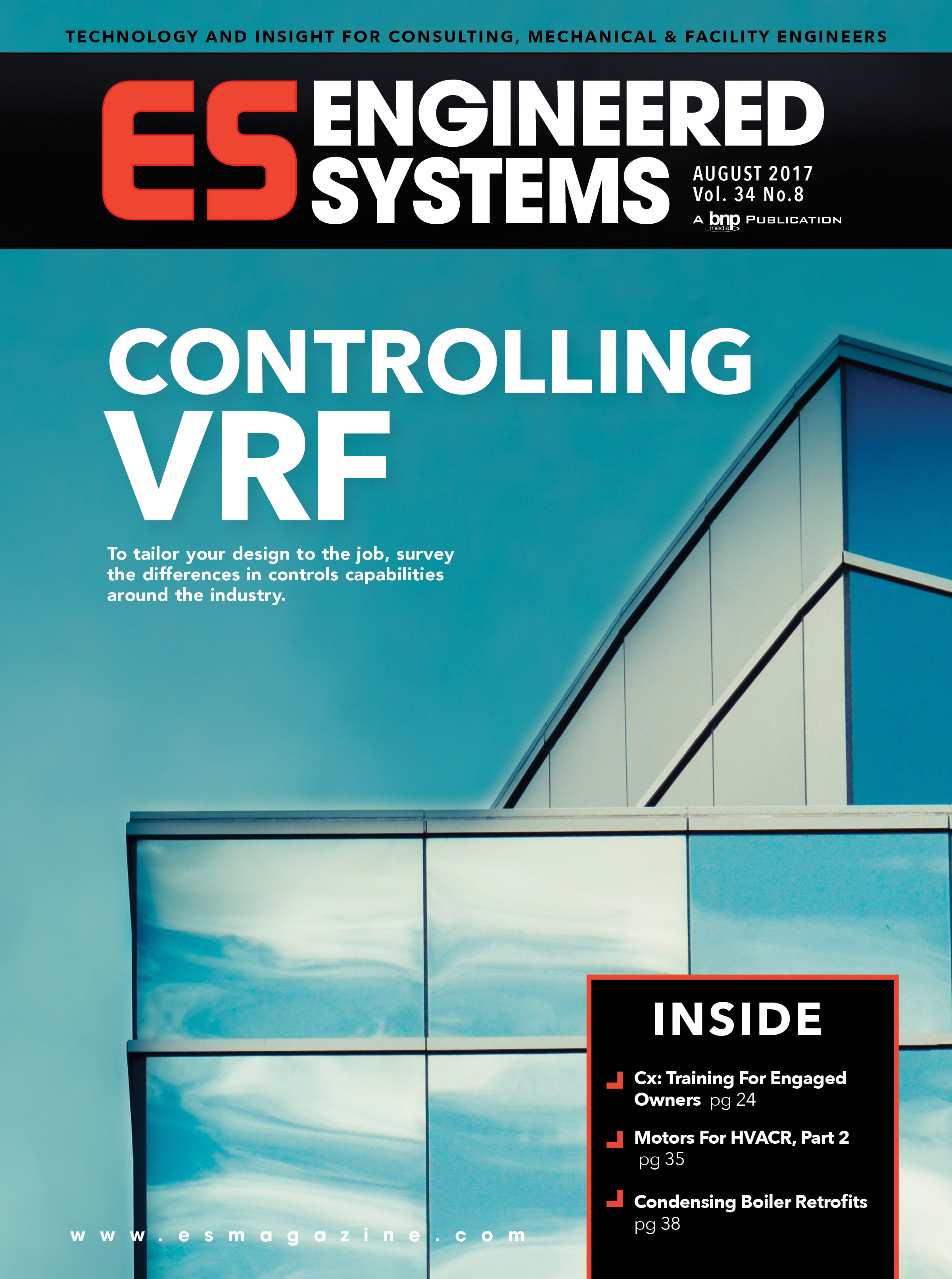After 38 years in this business, one thing that continues to remain the same is fair-to-good building control system performances. If you don't believe me, ask the people who created the LEED(tm) certification program, where commissioning is a prerequisite of these projects. They recognized that energy-efficient design on paper doesn't mean energy-efficient performance after the design engineer and the contractor have left the building.
The built-in need for commissioning
I attribute the call for commissioning to inadequate and/or incomplete sequence of operation narratives associated with building system designs. Going back to my belief that, "Yes, the owner did buy commissioning when they hired the design engineer," it is important to qualify my "yes" with a "No, you don't get the design engineer spending days at a time on the job site observing the functional performance." This additional time requirement doesn't occur within current contracts between the owner and the design engineering. Facilitating the commissioning process within the construction phase, I believe, is certainly a benefit but beyond standard fee arrangements between owner and engineer.In January 1996, when ES and I discussed the idea of publishing a "Back to Basics" column, I noted that the issue of engineers not writing good sequence of operations was a real weakness in our industry. At that time, building commissioning was becoming the panacea for resolving the problem of HVAC systems not operating per design intent. Today, commissioning has become a commodity service, where proposals can vary significantly in cost depending on the commissioning firm.
Frequently, when asked to explain my position on the issue of owning or not owning commissioning, I simply pull out an automatic control narrative and show how we in the building industry write automatic controls systems and then show how much information is lacking due to the way these narratives are built. If our industry could change the way it has been writing control strategy and combine it with a functional performance format, we would have a comprehensive control sequence and the verification test procedure within one document.
Completing the puzzle
My solution and professional goal is to see the design engineer writing a more itemized sequence of operation while simultaneously writing the commissioning process of "action-reaction" that includes and identifies all the devices, valves, dampers, interlocks, etc., associated with complete system interaction.If you open up a control shop drawing submittal, then inventory all the devices, valves, dampers, and equipment, and then look at the skimpy sequence of operation that probably omits reference to most of these components, you have to ask yourself, "If I need all these devices, valves, dampers, interlocks, and equipment, then why aren't they identified in the sequence of operation?"
For example, I can pull out a one-page sequence of operation a design engineer produced that would be considered a good, detailed narrative of how the system works. Using the "Back to Basics" functional performance test (FPT) format, I inventoried a full pages of "bill of materials based on the "system action" being placed in the "off" position. Multiply this page by seven modes of operation (i.e., occupied-heating, unoccupied-heating, etc.) and you now have seven pages of detailed, sequence of operation, item-by-item. Yes, it is a lot of information to document, but I have found the itemized approach will take less then four hours to complete all seven sequences - not really a lot of time when you think that this is the heart of the system and the cornerstone to efficient design and performance.
I have been preaching this concept of writing a sequence of operation in the format of functional performance within the firm I work for and have received a positive reception. Now we are selectively trying this concept out on our design engineering jobs as we slowly test the culture change from writing traditional sequences to this new combination sequence: FPT.
I believe this approach should significantly challenge the design community to keep pace, and the building owner will benefit from purchasing commissioning in the design phase as part of the design engineer's fee. Sure, the owner will still need to pay for the design engineer or an independent commissioning engineer's time on-site facilitating the commissioning process, but now and in the future, the owner can be assured that, "Yes, I did buy commissioning when I hired you." ES


